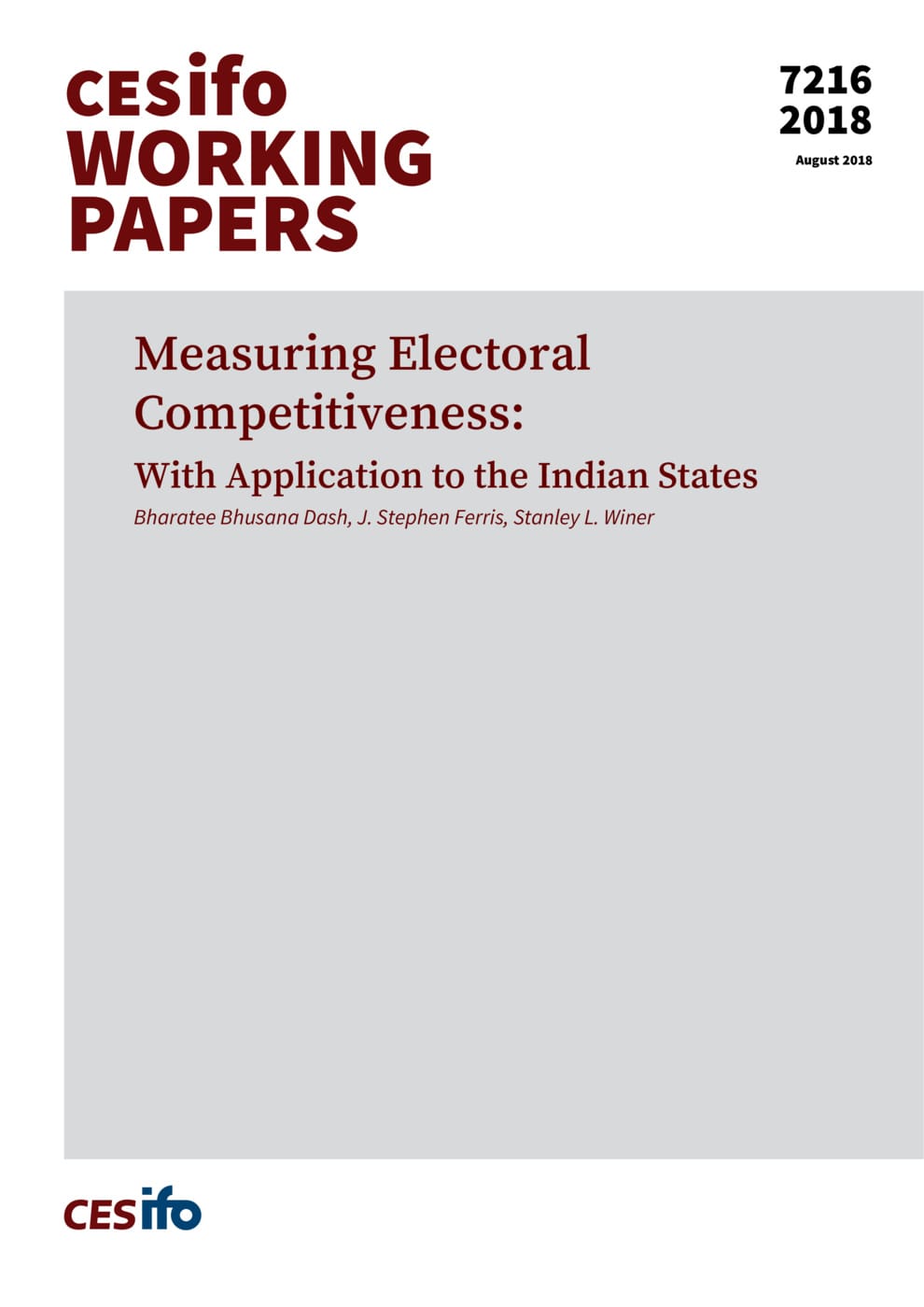Measuring Electoral Competitiveness: With Application to the Indian States
CESifo, Munich, 2018
CESifo Working Paper No. 7216

We consider alternative methods of measuring the competitiveness of a majoritarian electoral system in the context of an analysis of Indian State elections. Our analysis highlights a number of weaknesses in the construction and interpretation of commonly used measures such as the effective number of parties, the first versus second place vote margin and safe seats, while presenting these and their proposed alternatives for 14 major Indian states from 1952 to 2009. The alternative indexes we present are based in part on ideas that are longstanding in the literature but have not been fully adopted within the Indian context. These indexes incorporate vote volatility, allow for multi-party competition at the constituency level, and adjust for asymmetry among parties of safe seats in the legislature. We argue that these newly computed indexes capture distinct but related dimensions of electoral competition better than do the extant commonly used measures. The analysis of these indexes is then extended to consider the role of caste, class, regionalism and level of development to reveal interesting patterns of commonality and difference in electoral competition across the states.
Public Choice
Empirical and Theoretical Methods